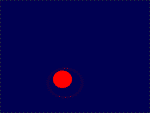|
NINE at Saugerties
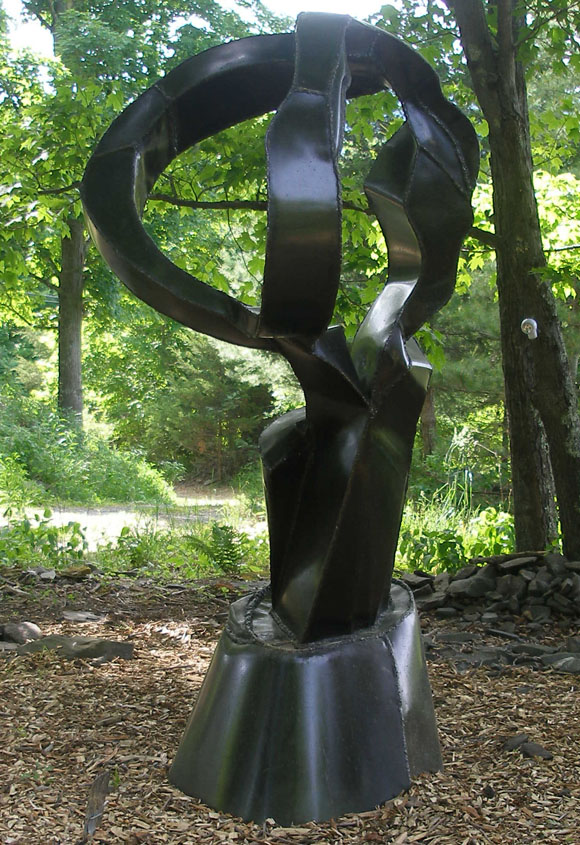
|
|
Jeffrey Schiller: welded steel sculpture
|
by Robert Sievert
The warm weather has bought about the outdoor art
scene. Showing work outdoors can present more
problems than it may seem. In a recent show NINE
in Saugerties New York many of them became apparent.
It is especially important to be able to isolate the
artwork so that it can be seen. It would seem to
be a natural event, place a sculpture in a field and
voila!, art in nature. This show NINE while brave
in spirit had a number of drawbacks, not every piece
of art work was shown to its optimum.
NINE displayed the work of nine artist from the
region. There were seven sculptors and two painters.
The painters were shown on a wall of the church but
deserved a better viewing spaces. Of what I could
see Ruth Edwy was in command of a strong painting
technique and Angela Gaffney Smith produce pristine
watercolors. It was the sculpture that attracted
my attention.
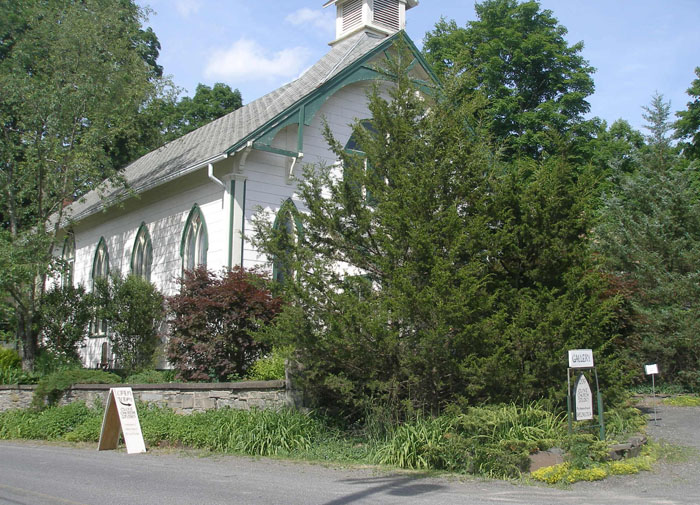
|
|
Clove Church
|
The exhibit was at Clove Church, the studio/gallery
of one of the exhibiting artists, Fay Wood, who has
spent the last seventeen years developing and
rebuilding this country church on Fishcreek Road
into an art-space. The exhibit was fit in-between
Ms. Wood's studio space in the church and spread out
in the accompanying four acres of Catskill Mountainside.
Ms. Wood is a gifted sculptor of whimsical figures.
The interior of the church/studio really was not
ideal exhibition space. First it was difficult to
understand exactly what was in the show and what was
in the daily studio but several artists managed to
isolated their work and make stylistic statements.
Once you got outside the art seemed more accessible.
It was distributed over a range of woods, fields and
pathways. The region is rich in bluestone. At one
point the streets of New York City were lined with
bluestone sidewalks, much of it from the quarries
in this area. There was plenty of bluestone in
evidence. The paths and walls of the church property
were made or lined with bluestone. On a small hill
in the rear of the building a circular bed of bluestone
was laid out reminiscent of the installation art
that was in evidence in the 70's. Here it seemed a
more natural occurrence and was a pleasure to look
at, not listed as an art installation.
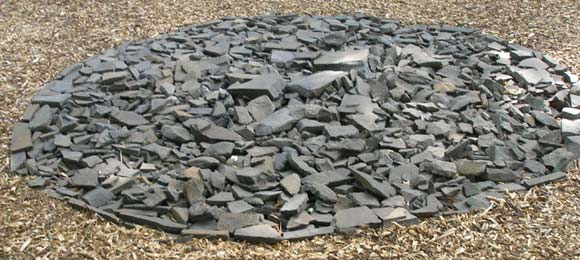
|
|
Bluestone Circle
|
Basha Ruth Nelson's had a nice corner of the church
in which she installed several examples of her work.
she makes sculptural forms by juxtaposing ribbons
of metal bent , folded , creased and curled into a
curtain of myriad reflective surfaces. It was clear
that her work should be seen in much more intimate
surroundings. The work is contemplative, All of her
surfaces are highly reflective and shinny. There
is a metallic sensuousness at play here.
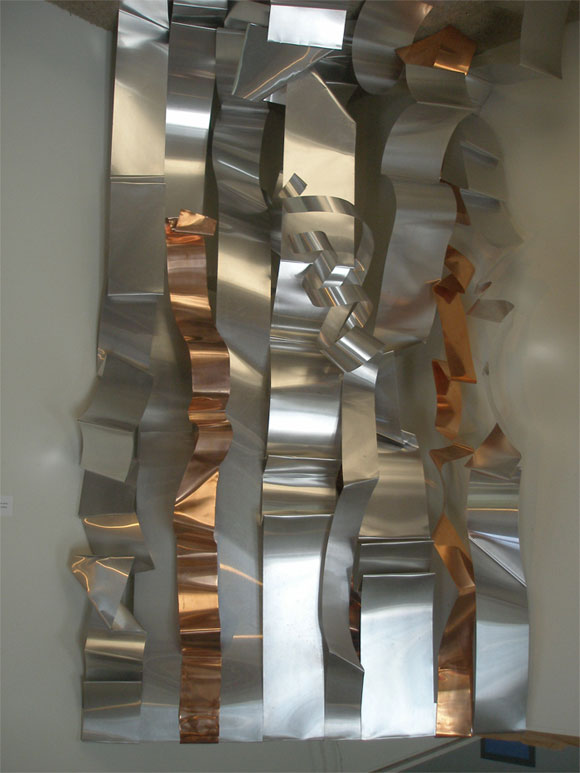
|
|
Basha Ruth Nelson
|
There was plenty of Ms. Wood's work to be seen. The
problem was distinguishing what was in the show
and what was her workspace. Her presence as an
artist was everywhere. She makes eclectic
assemblages. A very witty dragonfly was
suspended overhead and must serve as the
designating example of her work.
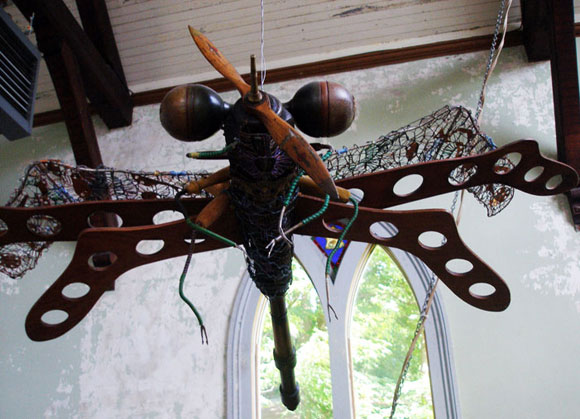
|
|
Fay Wood: Dragonfly (mixed media)
|
Also on view inside the church was the very polished
work of Alex Kventon. Perhaps the most
finished work in the exhibit his sculptures had very
refined surfaces on abstract form. One piece was
finished in highly polished stainless steel that had
a mirror-like surface. It was hard for me to precieve
the form of this work as the reflections defied ones
perceptions. Much more successful was a golden disk
broken into sections that could be read as anthropomorphic
forMs. On this piece the artist has varied the
surface with changing patinas that created visual
richness.
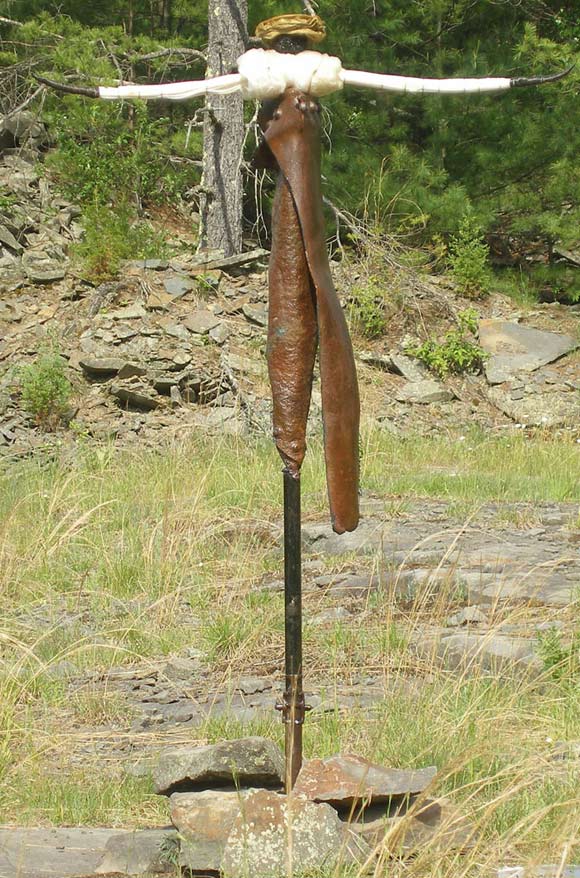
|
|
Michael Ciccone: metal sculpture
|
The exhibit continued outside on the grounds that
were mixture of wood, fields and landscaped gardens
Showing sculpture might seem to be an easy thing to
accomplish, however this show proved that to be an
erroneous statement. Some work was set in openings
of the woods and other work in open spaces. I found
it difficult to get a good take on the work of Michael
Ciccone. He showed work that combined found metal
objects and stone welded into eclectic forMs. The
easiest to identify was set in an open field. Atop
a metal shaft a skull like form was crowned by what
seemed to be a set of longhorns. This had a totemic
demonic effect, almost a defiant presence. His other
work seemed more concerned with basic form such as
his two stones balanced on a forged steel construction.
The problem I had was that some of it disappeared
into the surroundings. Ciccone's sculpture has an
attractive physical heft but was not always easy to
distinguish the finished form. I think he is someone
better suited for indoor formal presentations.
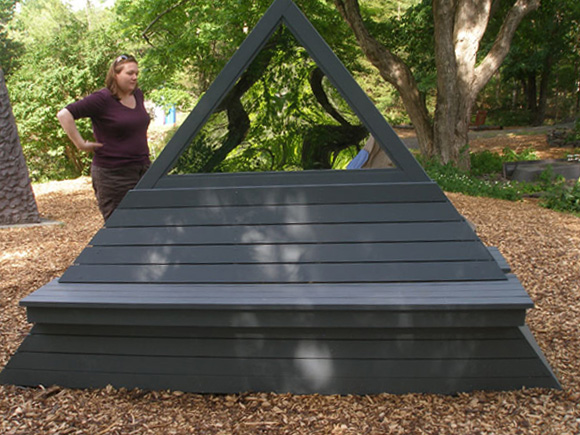
|
|
Anthony Krauss: Bench
|
Anthoy Krauss produced a pyramid like construction
that was also a bench carefully crafted out of wood
with a mirror set into the upper section. The mirror
reflected the surrounding woods so that the piece
had environmental dimensions. He likes setting
mirrors into suprising elements, nearby a tall
concrete pyramid also was topped off by a mirror
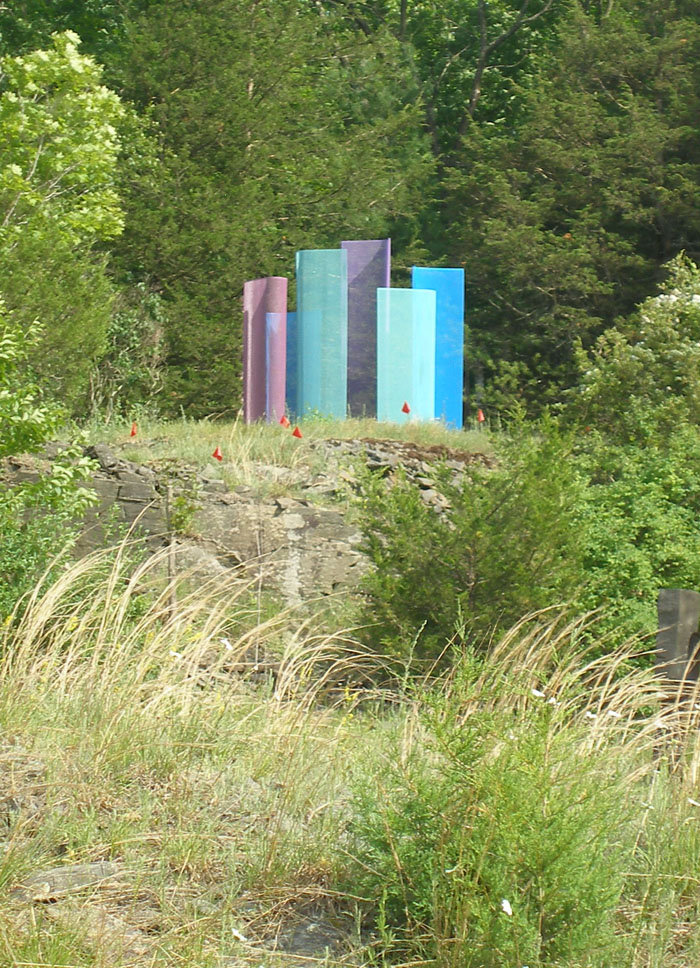
|
|
Shelley Parriott: colorfield sculpture
|
When I first saw Shelley Parriott's work up close it
raised a lot of questions in my mind. She assembled
a series of transparent color panels made of some
plastic material so that they overlapped and the
colors varied as you looked through the construction.
It was quite large and I couldn't quite figure out
if the changing hues were worth the effort of
assembling this structure. However later when I
walked to the field below and looked back at the
hill where her work stood I was quite impressed with
the strength her work had that carried across a
considerable distance. Her work dominated and changed
the character of the entire hillside.
I must admit that my reason to visit the exhibit was
to see the work of Jeffrey Schiller. In the spirit
of full disclosure I must say that I own a number
of Schiller's sculptures and I have always admired
the ability of Schiller's large welded steel sculptures
to dominate a natural environment making it most
satisfying to view. There is no question of his
work being able to dominate a space. His work has a
core strength of form that is both powerful and at
the same time physically reassuring. One feels safe
in the presense of these large metal works.
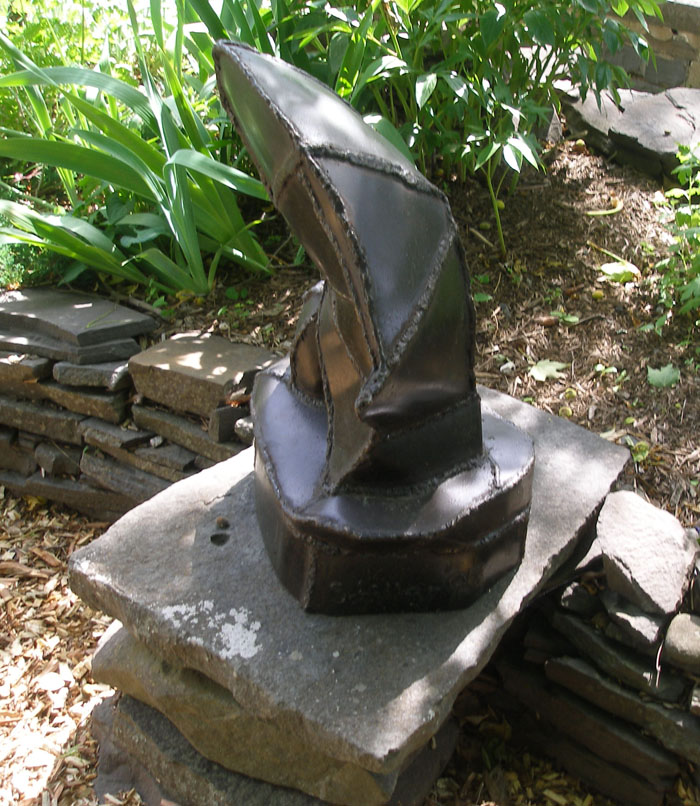
|
|
Jeffrey Schiller: welded steel sculpture
|
There was evidently a lot of effort put into this
exhibit. These sculptures were massive and the
settings remote. Every artist was of professional
quality. I think the message here is that this area
really needs an exhibition space worthy of the talents
of these artists. If they continue to use Clove
Church a lot more effort is needed in clarifying the
exhibition space.
|
